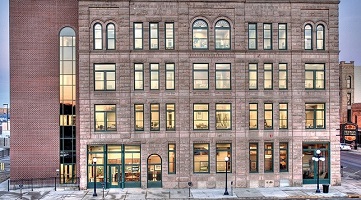 NATIONAL REPORT—Emerging technologies for energy management have shown incredible promise. However, these systems aren’t always compatible with older buildings, and their owners may need to invest in repairs and adjustments to accommodate the changes. Only then can they enjoy the full potential of modern equipment.
NATIONAL REPORT—Emerging technologies for energy management have shown incredible promise. However, these systems aren’t always compatible with older buildings, and their owners may need to invest in repairs and adjustments to accommodate the changes. Only then can they enjoy the full potential of modern equipment.
Fortunately, the process for retrofitting a building isn’t nearly as challenging as it was in the past. With access to cloud computing, real-time data and analytics software, wireless sensors and submetering, building owners have found it far more affordable to manage upgrades and take control of their energy usage than ever before.
According to the American Council for an Energy-Efficient Economy, smart buildings can save businesses in a variety of industries, on average, between 8 and 18 percent of their total energy consumption, among other benefits.
So what insights can hotel owners and investors take away from this information? What safety measures precede a project, and what impact do the modifications have? We’ll explore these questions and others like them, looking at the subject of modern energy management in greater detail.
The Impact of Modern Energy Management
Technologies for energy management have an enormous impact on a building’s sustainability. When hotel owners integrate some of the systems mentioned above, they can control and reduce their energy consumption over time—which, in turn, lowers the carbon footprint of their commercial property.
As context, many companies have made energy efficiency a top priority. They look at today’s innovations as a way to embrace corporate social responsibility. When they make adjustments to their buildings, little by little, they show their customers they’re a progressive organization with eco-friendly values.
That said, building owners and investors are also interested in the economic benefits of their improvements. Among other incentives, utility cost savings are the primary influence for past activities that have involved energy-efficiency retrofitting. The incorporation of modern equipment has clear financial advantages.
“For building owners and investors, energy efficiency upgrades increase the asset value of a property,” says John Hayden, Senior Project Development Manager for Reynolds Energy Services. Reynolds specializes in restoration, energy management and commissioning services for buildings.
“For specific types of improvements (e.g., geothermal heat pumps, combined heat and power (CHP), solar PV) and using cost segregation during building upgrades, favorable tax benefits (deductions, credits, accelerated depreciation) can result in much higher returns on investments in addition to the contribution of lowered operating, energy, and maintenance costs. In many locations, utility rebates can further increase the financial attractiveness of upgrading an older building.”
Creating a Strategy for Retrofit Projects
Before they can begin to retrofit their building, hotel owners need to take some initial measures. Can the building owner complete their intended work in phases to minimize disruption? Are there any hazardous materials in the building, such as asbestos, polychlorinated biphenyls or lead paint? These factors can influence the final cost of the upgrades, extending the amount of time they take to finish.
Once a hotel owner has identified any impediments, they can move forward with improving sustainability and energy performance in their building. On the subject of updating an older building for energy management, Hayden comments: “Improving some or all of a building’s lighting, appliances, and envelope are good first steps. If other central infrastructure improvements are needed, these three have even greater, interactive impact. A building’s air-conditioning and heating loads are often reduced by improvements to lighting, appliances, and envelope. If these loads are reduced and if HVAC systems need to be replaced, the cost to do so is greatly reduced because the heating and cooling capacity is reduced.”
Whether hospitality professionals start small or aim for a more comprehensive project, the return on investment is still notable. As they decide on a strategy, hotel owners should perform an energy audit of their property to locate the most pressing areas of improvement.
Available Technologies for Energy Efficiency
Hotel owners and investors have a diverse variety of technologies for reducing their energy consumption. These systems range from simple to complex and depending on the budget and goals of the owner, they may find one option more appealing than another. Here are three examples on a growing list.
- Cool roof technology: A hotel owner can opt for a cool roof, which absorbs less heat and in turn releases less heat into the environment. Cool roofs reduce spending on air-conditioning and also create a positive impact on the community’s air quality and temperature control.
- Smart lighting: A smart lighting system can provide substantial savings through plug upgrades, automated controls, occupancy sensors and digital readouts of energy performance. Compared to other technologies, these improvements aren’t as involved or expensive.
- Energy generation: In some markets, on-site generation can provide reliable, renewable energy that powers a building while pushing it toward net-zero emissions. This can not only greatly reduce energy costs but create a marketable green asset for the hotel business.
These technologies and similar systems can effectively modernize an older building. However, hotel owners and investors need to adopt a strategic approach, preparing their buildings before they implement their plans. In doing so, they’ll ensure the safety of their projects and the success of their transition.
Updating Hotels for Better Energy Management
Hotel owners and investors have seen the value in new technologies for energy management, but the retrofitting process takes commitment. To enjoy the benefits of energy generation, smart lighting and similar systems, owners and investors need to take the necessary precautions before they begin work.
Holly Welles is a real estate writer with an interest in sustainability’s impact on the industry. Recently, she’s covered green architecture for online publications including Modlar and CADdetails. More of her work can be found via Twitter or on her personal real estate blog, The Estate Update.






